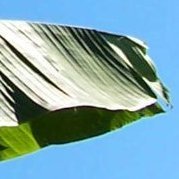Fungus Identification
-
Recently Browsing 0 members
- No registered users viewing this page.
-
Topics
-
-
Popular Contributors
-
-
Latest posts...
-
41
Report Thailand Launches Nationwide Drug Crackdown
Thaksin did a good job cleaning up the villages for drugs last time, even his methods was questionable. During the army it become worse than ever. -
3
Crime Pattaya Teen in Fear After Brutal Machete Attack
Like soi dogs, very brave when there are 3 or more of them -
24
Accident Steel Structure Collapses in Bangkok, 13 Workers Injured
The stuff they said was okay few days ago -
67
Economy Thai Baht's Rise in Jeopardy Amid Political Uncertainty
I don't think the strong Baht will have effect on tourism. Tourists take it into account and it certainly won't limit them. I think instead it will have negative effects on expatriates and exporters. -
30
Crime Swedish Man & Thai Woman Arrested for Cocaine Possession & Distribution in Phuket
That's only what they found. -
346
Immigration Thailand Digital Arrival Card. TDAC
Did the immigration official ask you before or after he scanned your passport?
-
-
Popular in The Pub












Recommended Posts
Create an account or sign in to comment
You need to be a member in order to leave a comment
Create an account
Sign up for a new account in our community. It's easy!
Register a new accountSign in
Already have an account? Sign in here.
Sign In Now